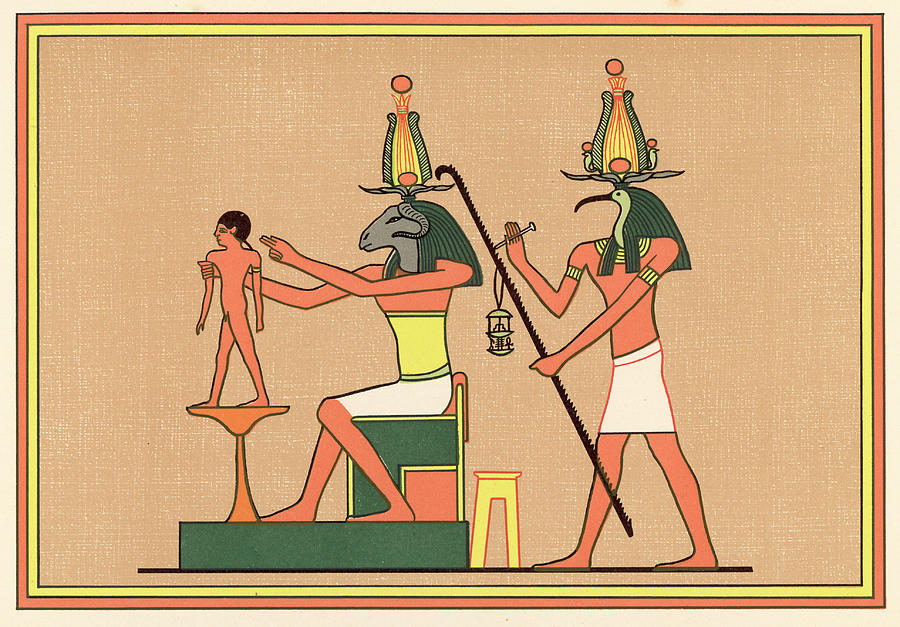
by Moe | Nov 25, 2021 | Egypt, Gods & Goddesses, History of the Brotherhood
In Ancient Egypt, the god, Khnum (Chnubis, Knubis, Chnum, Knum, or Khnemu) was a creator god credited with giving birth to all life and the Gods of Egypt. He was Chief of the Potter’s wheel, father of fathers and the Gods who makes women pregnant, was Lord of the air and the field.
In Egyptian mythology, he creates humans from clay, which he made at a potter’s wheel before placing them into their mother’s womb was one of the earliest Egyptian deities, originally the god of the source of the Nile.

He was later described as having molded the other deities as the “Divine Potter” and “Lord of created things from himself” and the “father of the fathers” and Neith as the “mother of the mothers” who later become the parents of Ra, who is also referred to as Khnum-Re.
He was depicted as a ram-headed man who was credited with molding the great cosmic egg and he is also associated with the goddess Maat (truth) and Thoth, the divine scribe.
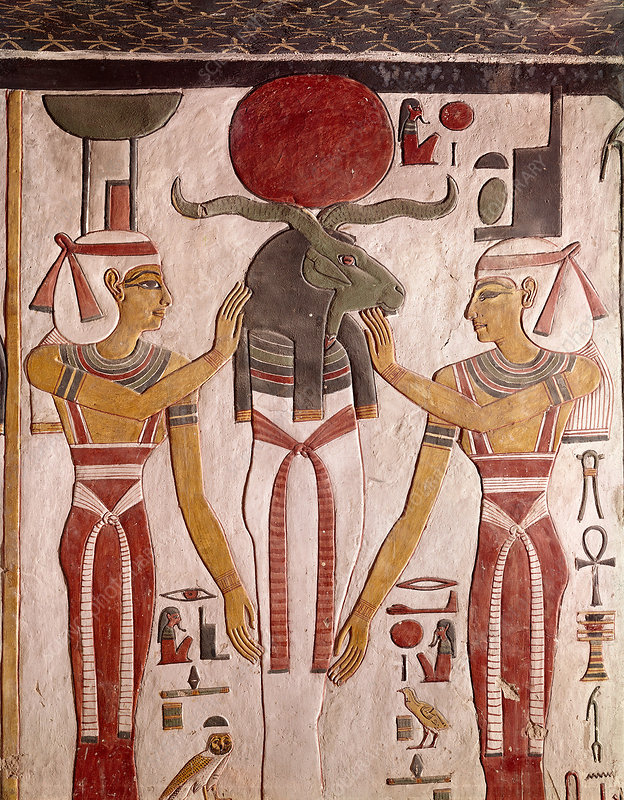
Ancient Egyptian tomb relief of the ram-headed god Khnum, guardian of the source of the Nile.
The female Goddess of Justice and the Lower World, the Land of Ghosts, was called Maat (Mot, Mout or Mut). She was often depicted with the vulture headdress and sometimes a Lion’s head. In legends, she is “The opener of the nostrils of the living.”
The Temple of Khnum, also known as the Temple of Esna, is a magnificent structure located approximately 485 miles south of modern Cairo that sits on the west bank of the Nile. It is built of red sandstone, with a grand portico composed of twenty-four columns decorated with unique lotus leaf details with distinctive Grecian and Roman styles.
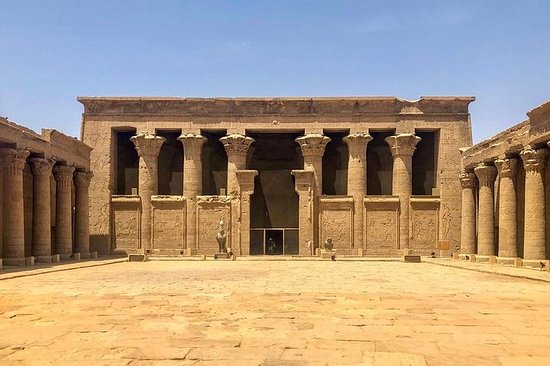
The temple was unique to other Egyptian Templed because it was built approximately nine meters below ground level, and the part of the temple is buried underneath the modern town. As a result, the temple sits in a hollowed-out pit or valley, possibly due to its association with the underworld.
Inscriptions carved upon the temple walls tell us the attributes of this God, the sacred history surrounding his rule, and special instructions about the code of conduct expected from visitors entering the temple who were expected to be ritually pure by washing themselves and removing all body hair, cut finger, and toenails, and to have abstained from sexual relations for several days.
The temple was first started by the Egyptian King Tuthmosis III of the 18th Dynasty but was later finished by the Grecian Ptolemaic and Roman Emperors, from 40-250 A.D. It played a significant role in the late Egyptian Empire during the Greco and Roman rule, which various reliefs and inscriptions show us the Ptolemaic and Roman Emperors dressed in Pharaoh costumes, offering sacrifices to the God Khnum. The Roman Emperor Claudius had rebuilt and extended earlier buildings and was connected to the Nile by a quay built by Roman emperor Marcus Aurelius (AD 161–180)
The back wall, to the northeast, constructed during the Ptolemaic period, features reliefs of two Ptolemaic pharaohs, with the earliest being mentioned is Ptolemy V, who is seen offering a libation by his son Ptolemy VII Euergetes (170–116 BC). Quite a few Roman emperors, including Domitian, Septimus Severus, Caracalla, and Geta, had their names etched near the hall’s rear gateway.

Roman Emperor Trajan, carried by six Priests, with jackal and hawk masks of the gods, adorn each room’s entrance, and on the roof, Emperor Trajan is seen dancing before the goddess Menhet. The northern wall shows Emperor Commodus catching fish in a papyrus thicket with the God Khnum, and at the foot of this representation is the last known hieroglyphic inscriptions ever recorded, completed by the Roman Emperor Dios in 250 A.D.
The columns were inscribed with ancient texts describing the religious rituals and hymns to the God Khnum, in which we learn about his various powers and attributes.
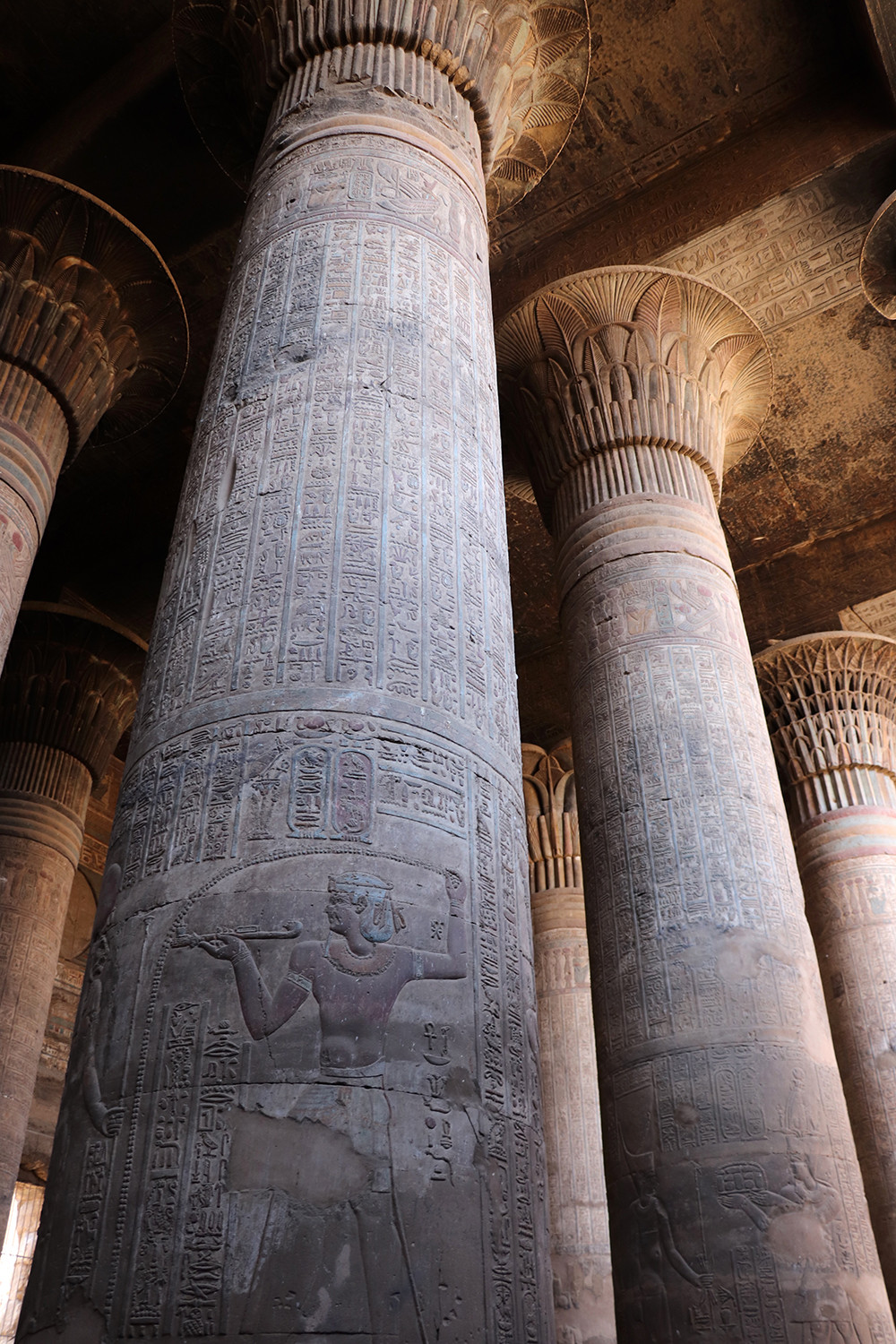
The first is a morning hymn to awaken Khnum in his shrine; the second is a beautiful ‘hymn of creation’ that acknowledges him as the creator of all, even foreigners:
‘All are formed on his potter’s wheel, their speech different in every region, but the lord of the wheel is their father too.’
The temple gained international attention when the French Emperor Napoleon Bonaparte had conquered Egypt in 1798 when he brought along an ‘army’ of scholars to study Egypt’s ancient secrets and history. As a result, Bonaparte created The Institut d’Égypte or Egyptian Scientific Institute, which is a learned society in Cairo specializing in Egyptology whose mission was “progress and the propagation of the Enlightenment in Egypt.”
The excavation of the Temple of Khnum was spearheaded by the French Egyptologist Serge Sauneron (1927-1976), who published his research and the transcription of the inscriptions in full. Here are a couple of hymns to Khnum showing us how important he was as the main God and Father of all depicted on Esna Column 15 (353-363).
The Ba of Re,
who came about in the beginning,
he rejoices to see him
every day.
He makes for him a property deed
in his name,
its limits are all eternity.
Khnum-Re Lord of the Field.
father of fathers,
who begat gods, people,
and likewise all animals.
Their faces are turned back
to the place where (he) is,
beseeching their lives from him.
Khnum-Re Lord of Esna.
The praises
for this august god:
O he who sits upon his serekh,
populating every place.
O he who goes around the two lands in life
to enliven those who are within them.
O Chief of the Potter’s Wheel,
who builds as he desires.
O lord of air,
who endows life to those whom he created.
O ejaculating bull,
who makes semen into/from bones.
O he who makes women pregnant
through that which he did.
O beneficent father,
who binds together the excellent seed.
O he who forms gods, men,
and all animals
upon his potter’s wheel.
O he who built the Lord
in order to guide the two lands.
O he who created the papyrus stalk
for the goddess who is with him.
O he he distinguished whomever he desires inside wombs.
O he who creates the egg
in accordance with his mind.
O he who enlivens babies with his breath.
O he ruptures the amniotic sac at its time.
O he helps nourish what he made
inside all wombs.
O he who acts as King of the Gods (Amun)
and whose manifestation builds on the wheel.
O he who makes a path
for the not-yet-breathing in his form.
[O he who allows nos]trils [to breathe] with air.
[O he] who endows the body with life.
O he whose rewards are building and enlivening.
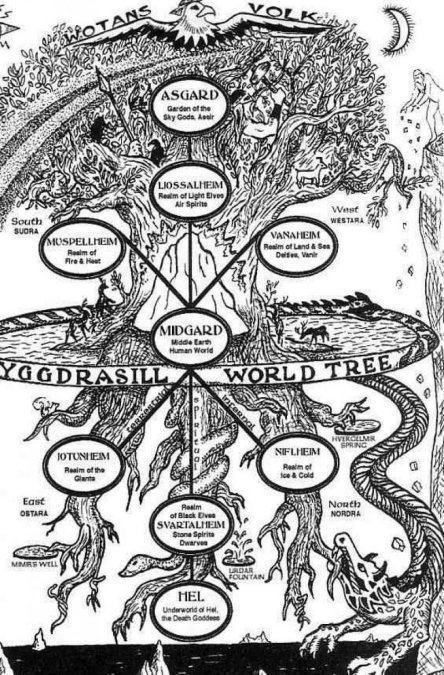
by Moe | Sep 19, 2021 | Ancient History, Norse Mythology, Toxic Mold
“Nine worlds I knew, the nine in the tree, With mighty roots, beneath the mold” – The Poetic Edda Vol. 1
In Ancient Norse cosmology, Yggdrasill was born from a seed – fyr mold neðan that grew into the living World Tree with a supernatural invisible root system that connects to the Axis Mundi or the world cosmos creating the Order of the World of which the Gods, heroes, men, and women are not only literally born from it, their fates and destinies are also entwined. We learn about Yggdrasill introduced by Vǫluspá (“Sibyl’s Prophecy”), through the Poetic Eddas which were written by an anonymous source in approximately the 11th-12th centuries.

Poems like Vǫluspá (“Sibyl’s Prophecy”) tell us the Norse cosmogonic history of nature, mold, the gods, men, and dwarfs, from the metaphysical birth of the world through a seed found in mold, which grew into the World Tree creating life, order, death, and ultimately, the world’s destruction. We are introduced to the Norse All-Father who is a divine magician and master of war, Odin and his sons Thor, the god of thunder, and Loki representing the forces of chaos and destruction. Other prominent characters include Balder (Baldr) and Frey (Freyr) and Freya (Freyja).
We are told, at the beginning of time, Yggdrasill had lain as a seed fyr mold neðan (Völuspá 2). The Tree has three roots, which shoot down in three directions (Grímnismál 31). Its middlemost root stands over Mimir’s well which is located “where Ginnungagap once was” (þar er forðum var Ginnungagap, Gylfaginning 15), that is to say, in the middle of the primeval space, with Niflheim on one side and the warm region on the other.
Within Yggdrasill are three special world wells or reservoirs containing special fluids called; Hvergelmir, the northerly; Mimir’s well, the middlemost; and Urd’s well, the southerly. The roots of the world tree extend up out of these waters. The most middle part, Mimir’s well contained special properties such as the most prized of the Gods – mead which contained a special creative force, wisdom, and ecstasy.
The Poetic Eddas tell us of the Nine Worlds and that the Holy Races of humanity come deep within Yggdrasill – “beneath the mold.”
These references to Yggdrasill ain as a seed fyr mold neðan with its roots “beneath the mold” and its most special substance of mead can help us identify the true meaning of the Norse concept of Yggdrasill. Something that has never been detailed by historians, scholars, and or researchers who seem to miss or gloss over the fact that “mold and decay” are the key factors that I believe can help us identify the Norse concept of Yggdrasill, which I have found is a latter more developed version of the Ancient Greek concepts of Tartarus.
I believe that as the Greek concept of Tartarus, the Norse Yggdrasill is a metaphysical World Tree that is what we would call today mold or fungus whose filaments and mycelium permeate all living beings and nature as they work in concert with the earth’s magnetic biosphere.
According to the story of Yggdrasill, it acts as a supernatural connection device or invisible roots system that is said to unite everything in the universe or multiple worlds of the Ásgard (the realm of the Aesir) within its various realms of gods, giants, and humans. The tree’s enormous branches connect the multiple worlds of the Ásgard (the realm of the Aesir) and the trunk of the tree represents the world-axis, which pierces through the center of Midgard (the human realm).
The identity of the Tree and Cosmos are attested to in the Poetic Eddas like the Völuspa.
Hearing I ask | from the holy races,
From Heimdall’s sons, | both high and low;
Thou wilt, Valfather, | that well I relate
Old tales I remember | of men long ago.
I remember yet | the giants of yore,
Who gave me bread | in the days gone by;
Nine worlds I knew, | the nine in the tree
With mighty roots | beneath the mold.
In Grímnismál, The Speech of Grimnir (“The Masked One” i.e. Odin), we learn Mead gives sacred knowledge and a character names Learad whose horns drip into the Boiling-cauldron [Tartarus], whence come all the rivers on earth and at its roots side is rotting, which the serpent feeds.
At its roots lies the source of Mìmir where Odin left one of his eyes as a pledge to drink the sacred mead of knowledge. The dragon Níðhöggr (Níðhǫggr, Nidhogg) is a dragon/serpent who gnaws at a root of Yggdrasil. Nidhögg dwells in the most northern parts of the underworld residing near Loki’s place of imprisonment and the river Slid whose eddies whirl with weapons. Nearby, is the Náströnds, “Corpse-shores” whose doors of the hall open north, onto a dark sea, “far from the sun”. Within the hall constructed of woven serpents, the worst sinners showered with venom as Nidhögg sucks the bodies of the náir (“Corpses”).
Heathrun is the name of the goat that stands on the hall of the Father of Hosts and bites at the boughs of Learad (a tree). Oakthorn is the name of the hart that stands on the hall of the Father of Hosts and bites at the boughs of Learad: his horns drip into the Boiling-cauldron [Tartarus], whence come all the rivers on earth. . . .
In the Eddas, Völuspá 19, the Norns are said to saturate the tree with ausinn hvíta auri, “water blended with white mud.” Gylfaginning tells us: “the Norns, who dwell by Urd’s well, take water from the well each day, and with it the mud that lies around the well, and pour it over the tree, so that its branches may not rot or decay. This water is so holy that all things which come into contact with it turn as white as the membrane called skjall that covers the inside of an eggshell.”
As Yggdrasil relates to the Ancient Greek Tartarus, Hesiod tells us it is the unfruitful sea (pontos) where there are shining gates and an immoveable threshold of bronze having unending roots, and it is grown of itself. And beyond, away from all the gods, live the Titans, beyond gloomy Khaos.” He says that the edge of the cosmos is where the flat disc of the earth meets the descending dome of the sky and the ascending walls of the pit of Tartaros. He said, “The sky-dome and Tartarean pit surround the cosmos in an egg-shaped shell with Tartaros descending as far beneath the earth as the sky rises up above it.”
Hesiod, Theogony, 116 ff.: ―Verily at the first Chaos came to be, but next wide-bosomed Earth, the ever-sure foundations of all the deathless ones who hold the peaks of snowy Olympus, and dim Tartarus in the depth of the wide-pathed Earth, and Eros, fairest among the deathless gods, who unnerves the limbs and overcomes the mind and wise counsels of all gods and all men within them.
From Chaos came forth Erebus and black Night; but of Night were born Aether and Day, whom she conceived and bare from union in love with Erebus. And Earth first bare starry Heaven, equal to herself, to cover her on every side, and to be an ever-sure abiding-place for the blessed gods.‖ [Translated by Hugh G. Evelyn-White, 1914.]
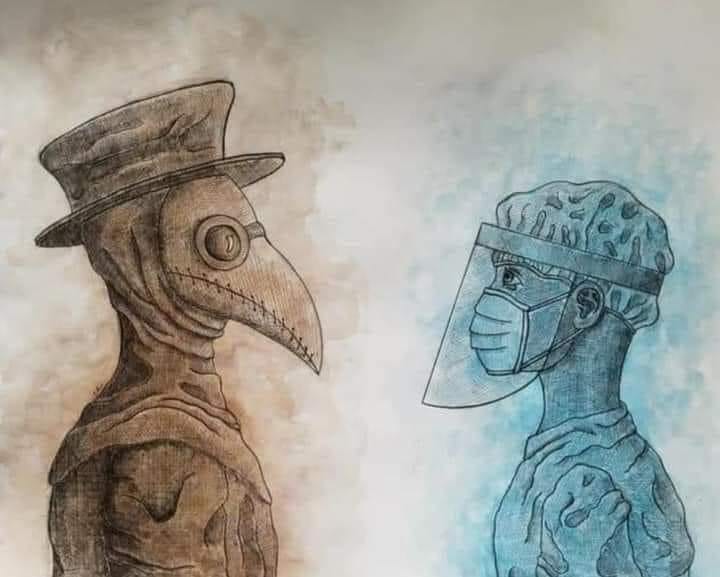
by Moe | Jul 26, 2021 | Mystical Christianity, Toxic Mold
The word leprosy is derived from the Greek lepra, which means spotted or stained and represents an ancient illness and disease known for millennia. Whole cities, houses, and even entire islands worldwide up until the 1900s were specifically designated by government and church authorities to segregate the sick lepers from the rest of the healthy population.

Not only people could get leprosy, but also their clothes and homes would become leprous via green, white (lepra alba), and red spots that they had to destroy if the stuff did not keep growing. I contend that this disease, medical practices, and remediation techniques have been carried out well over 2,000 years up until this very day.
The Father of Medicine, Hippocrates, calls it “the Phoenician disease,” and Galen said it was “elephantiasis.” I believe it is really a fungal disease due to Toxic Molds. What the CDC called last week, “Transmission of Pan-Resistant and Echinocandin-Resistant Candida auris in Health Care Facilities ― Texas and the District of Columbia.”
In studying the etymology of leprosy before the Greeks had called this disease lepra, the Phoenician Hebrews (Canaanites) had called it by the name tsara or tsarath in the Old Testament/Tora. The Coptic name for leprosy is tseht and the disease is described in the Papyrus Ebers as ukhedu. It is also mentioned in ancient Indian and Japanese history.
The Hebrew Tzaraath describes disfigurative conditions of the skin, hair of the beard and head, clothing made of linen or wool, or stones of homes located in the land of Israel in chapters 13–14 of Leviticus.
The first Old Testament mention of this disease is a sign given by God to the Hebrew Lawgiver Moses (Exodus 4:6 (Jahwist)), who was not only a king and priest but also a sick man with Leprosy aka Mold/Fungi. In the third Book of Exodus xi chapter, 4th verse, we learn, “Whence one cannot but smile at those who say that Moses was himself afflicted with the leprosy when he fled out of Egypt.”
Hence, Moses was expelled from Heliopolis on account of his being a leper (see also I, 26 and Ant, III, xi, 4). The second case is that of Miriam (Numbers 12:10), where the disease is graphically described (EP2).
The word tsara’at appears approximately two dozen times in the Hebrew Bible, almost exclusively in Leviticus, describing how it infects people, clothes, and people.
We find in the Greek Septuagint, the translation of the Hebrew Bible, negac tsara’at was translated in Greek as aphe lepras, and later in the Latin Vulgate, this became plega leprae. The word Tsara’at has continued to be translated as “leprosy,” even though the word leprosy was not known in the Mediterranean when the Hebrew Bible was written.
Other scholars have suggested that the proper translation of tsara’at is “mold or fungi” and I agree.
There is now a tremendous amount of science and research we have showing that molds contaminate (defile) buildings and cause respiratory distress, memory loss, and spots in the form of rashes, pimples, ulcers, and cancer in humans, and the fact that mold has been present since the beginning of time, validate the translation of tsara’at and the later lepra as “molds/fungi.”
These modern references can be compared to the Scripture like in Leviticus 14:45 to mildew defiling a place to live in, so drastic measures had to be taken.
In Leviticus, we learn an all-out effort by the ruling class and priesthood to cleanse Isreal of mildew/mold and leprosy, which seem to go hand in hand. Drastic measures were taken to inspect homes, people and make judgments or final inspection reports on all reported cases. If the home and people were found to have mildew or to contain leprosy, they were officially pronounced unclean and set for destruction and/or banishment from the community.
Today, leprosy can be compared to the Corona Virus/COVID, or what I feel is more appropriate, toxic mold/Super fungus that the Centers of Disease Control (CDC) is calling, “Transmission of Pan-Resistant and Echinocandin-Resistant Candida auris in Health Care Facilities.”
We can compare COVID patients to the Leper because people who contracted this disease were officially pronounced unclean (COVID positive) and were isolated from the community. The word unclean was a word that did not just describe a person who was infected, but it was what they did and how they lived that caused the disease. The English word unclean is derived from the Greek akathartos; impurity (the quality), physically or morally — uncleanness.
Also, people who have COVID have similar symptoms in Leviticus 13; 14; Numbers 12:10-15 under which the disease might develop itself:
- Without any apparent cause (Leviticus 13:2-8)
- Its reappearance (9-17)
- From inflammation (18-28)
- On the head or chin (29-37)
- In white polished spots (38, 39)
- At the back or in the front of the head (40-44)
Like leprosy, COVID and certain pathogenic fungi also cause inflammation in victims, with the main feature being lung inflammation and respiratory failure caused by an overexuberant immune response. This may lead to “multisystem inflammatory syndrome in children (MIS-C) , which is a serious condition associated with COVID-19 where different body parts can become inflamed, including the heart, lungs, kidneys, brain, skin, eyes, or gastrointestinal organs.
COVID patients also get spots like lepers via red and white spots in the mouth and throat, and it also has the ability to reinfect people who have recovered from a previous illness. We are also treating modern COVID patients like we would the Lepers in the past. I assume soon, we may take this remediation program to the next level like they did back in the days of Moses when the Lepers were often banished to special cities and islands to be officially segregated from the rest of the world indefinitely.
You must distinguish between the unclean and the clean. – Leviticus 11:47
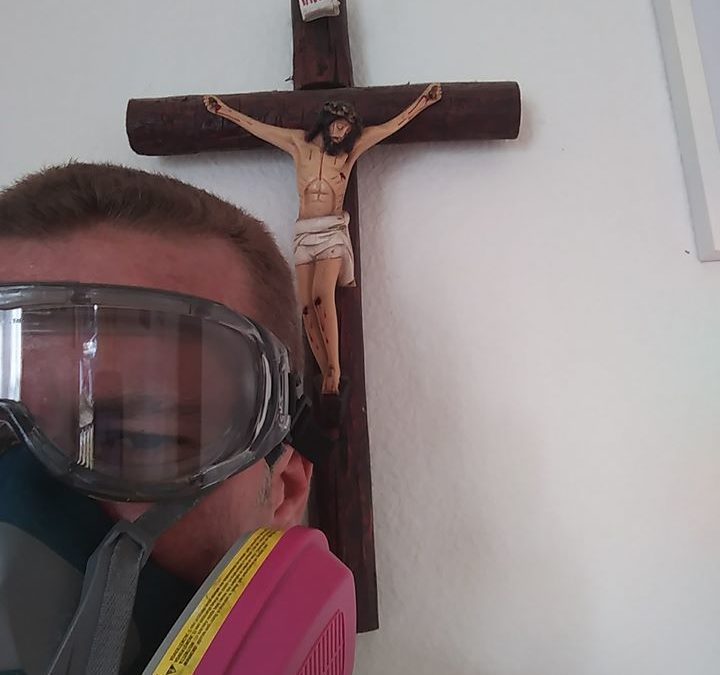
by Moe | Jul 26, 2021 | Government, Health, Toxic Mold
A new CDC press release is warning people of a possible new Pan-demic via a fungus/mold that seems to mimic the symptoms of Leprosy found in the Scripture. A mold that is transmissible from person to person and maybe the new global threat.
“This is really the first time we’ve started seeing clustering of resistance” in which patients seemed to be getting the infections from other patients, said the CDC’s Dr. Meghan Lyman, an author of the report.
A resistance that has been dubbed “pan-resistant” because like in Ancient Greece and Greco-Egypt, the God Pan had signified “all things.” Pan was often considered as the great principle of vegetable and animal life and his city was known as Panopolis.
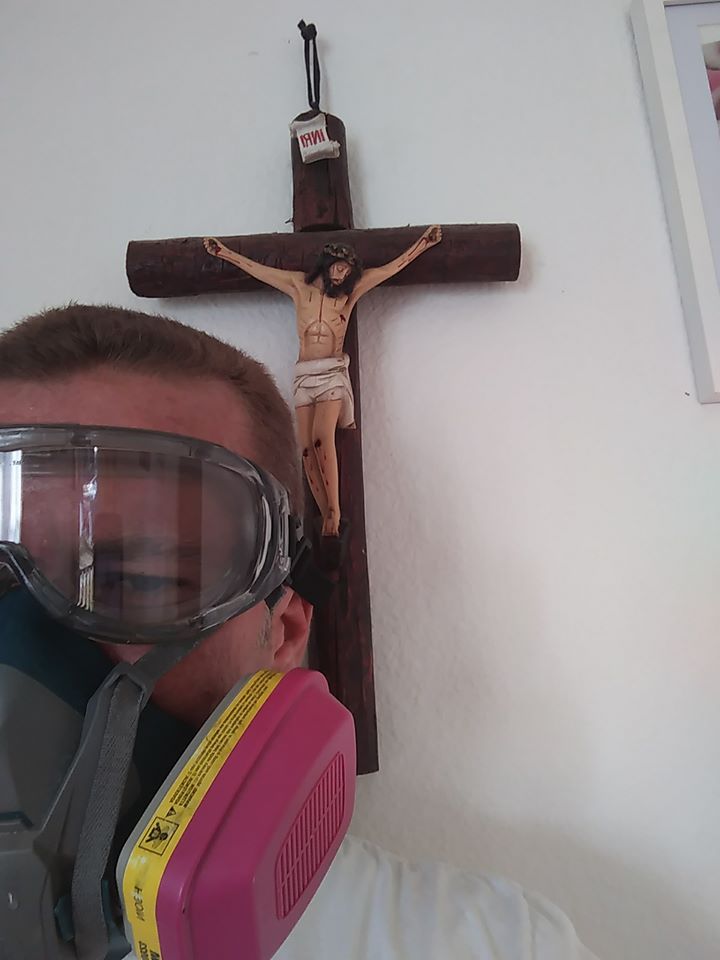
It is resistant of all things but the secret old meaning of the name Pan is an old word denoting to close or join together.
From January through April of 2021, Washington, DC, had 101 reported cases of C. auris and Texas had 22, according to Thursday’s edition of the Centers for Disease Control and Prevention (CDC) Morbidity and Mortality Weekly Report (MMWR).
“Surveillance, public health reporting, and infection control measures are critical to containing further spread,” the report said, while noting that “data are lacking” about how to treat cases that are resistant to all current drugs.
The title of the July 23. 2021 release is, “Transmission of Pan-Resistant and Echinocandin-Resistant Candida auris in Health Care Facilities ― Texas and the District of Columbia.”
According to the CDC, “Candida auris is an emerging, often multidrug-resistant yeast that is highly transmissible, resulting in health care–associated outbreaks, especially in long-term care facilities. Skin colonization with C. auris allows spread and leads to invasive infections, including bloodstream infections, in 5%–10% of colonized patients (1).
Three major classes of antifungal medications exist for treating invasive infections: azoles (e.g., fluconazole), polyenes (e.g., amphotericin B), and echinocandins. Approximately 85% of C. auris isolates in the United States are resistant to azoles, 33% to amphotericin B, and 1% to echinocandins (2), based on tentative susceptibility breakpoints.*
Echinocandins are thus critical for treatment of C. auris infections and are recommended as first-line therapy for most invasive Candida infections (3). Echinocandin resistance is a concerning clinical and public health threat, particularly when coupled with resistance to azole and amphotericin B (pan-resistance).
Pan-resistant C. auris isolates have been reported previously, although rarely, from the United States (4) and other countries (5). Three pan-resistant C. auris cases reported in New York developed resistance following echinocandin treatment and lacked epidemiologic links or common health care (4), suggesting that resistance resulted from antifungal pressure rather than via person-to-person transmission. Since January 2021, however, the Antibiotic Resistance Laboratory Network has detected independent clusters of pan-resistant or echinocandin-resistant cases in Texas and the District of Columbia (DC). Each cluster involved common health care encounters and no known previous echinocandin exposure, suggesting transmission of pan- and echinocandin-resistant strains for the first time in the United States.
Among 101 clinical and screening cases of C. auris† in DC during January–April 2021, three had an isolate that was pan-resistant. All resistant isolates were identified through skin colonization screening at one long-term care facility for severely ill patients, including those requiring mechanical ventilation.
Among 22 clinical and screening cases of C. auris in Texas during the same period, two were pan-resistant and five were resistant to both echinocandins and fluconazole. These seven cases were identified in patients who were cared for at two facilities that share patients in the same city; two patients were at a long-term acute care hospital, three at a short-term acute care hospital, and two at both facilities. Among these cases, four were identified through colonization screening and three through clinical isolates (two blood isolates and one wound isolate).
No known epidemiologic links were identified between the Texas and DC clusters. No patients with pan- or echinocandin-resistant isolates in either cluster had received echinocandins before C. auris specimen collection. Thirty-day mortality in both outbreaks combined was 30%, but the relative contribution of C. auris was unclear.
These two simultaneous, independent clusters of pan- or echinocandin-resistant C. auris cases in patients with overlapping inpatient health care exposures and without previous echinocandin use provide the first evidence suggesting that pan- or echinocandin-resistant C. auris strains might have been transmitted in U.S. health care settings. Surveillance, public health reporting, and infection control measures are critical to containing further spread. Clinicians should consider early antifungal susceptibility testing in patients with C. auris infection, especially in those with treatment failure.
Data are lacking about the most appropriate therapy for pan-resistant infections. Combination and investigational antifungal treatments can be considered, but evidence in clinical settings is limited (6). More information is needed to evaluate patient outcomes and identify proper treatment for C. auris cases with pan-resistance or echinocandin resistance.”

by Moe | May 31, 2021 | Drugs, Health, Toxic Mold
“Killer viruses and antibiotic-resistant bacteria aren’t the only infectious threats we face – deadly fungi are coming for us too,” warns Nic Fleming

A U.S. Centers for Disease Control and Prevention (CDC) physician and an epidemiologist, Tom Chiller, has been working in the effort against COVID is warning Americans of a new potential pandemic that is said to be much worse than COVID and some states have gone on high alert, according to the Scientific American.
This new global threats are molds/fungi like Aspergillus and Candida auris which the CDC says resembles the Black Plague.
Fungal microbes that are coinfecting COVID patients and are much more deadly than the virus.
“We have an enormous blind spot,” says Arturo Casadevall, a physician and molecular microbiologist at the Johns Hopkins Bloomberg School of Public Health.
“Walk into the street and ask people what are they afraid of, and they’ll tell you they’re afraid of bacteria, they’re afraid of viruses, but they don’t fear dying of fungi.”
Attempting to find solutions to this new threat, Chiller consulted with his peers in other countries where the fungus invaded their healthcare systems, causing fast-spreading outbreaks that killed up to two-thirds of the people who contracted it. The problem was that no drug and cleaning agents seemed to work at killing the fungus, and once it contaminated the hospitals and equipment, they had to rip it out and take it to the dump.
Some experts compare these fungal infections to the “creature from the black lagoon and the new Black Plague.
An epidemiologist from Imperial College, London – Johanna Rhodes, said that the fungus could survive on surfaces for long periods. “One of the things that make Candida Auris so scary is the fact it can linger on inanimate surfaces for long periods and withstand whatever you throw at it,” Rhodes said.
Rhodes was one of the scientists involved in containing a fungus outbreak in the UK in 2016. The fungus was compared to the Black Plague only after a CDC doctor found that the fungal makeup resembled substances that are found in lagoons, and other areas brimming with bacteria.
“It is a creature from the black lagoon. It bubbled up and now it is everywhere,” Dr. Tom Chiller said.
The Scientific American reports;
Accounts of infections trickled back from India, Italy, Colombia, Germany, Austria, Belgium, Ireland, the Netherlands, and France. Now the same deadly fungi were surfacing in American patients as well: the first signs of a second epidemic layered on top of the viral pandemic.
And it wasn’t just C. auris.
Another deadly fungus called Aspergillus was starting to take a toll as well.
“This is going to be widespread everywhere,” Chiller says. “We don’t think we’re going to be able to contain this.”
Warning networks that link infectious disease doctors and mycologists around the globe lit up with accounts of aspergillosis taking down patients afflicted with COVID: in China, France, Belgium, Germany, the Netherlands, Austria, Ireland, Italy, and Iran. As challenging a complication as C. auris was, Aspergillus was worse. C. auris lurks in hospitals.
The place where patients were exposed to Aspergillus was, well, everywhere. There was no way to eliminate the spores from the environment or keep people from breathing them in.
In Baltimore, physician Kieren Marr was acutely aware of the danger. Marr is a professor of medicine and oncology at Johns Hopkins Medical Center and directs its unit on transplant and oncology infectious diseases. The infections that take hold in people who have received a new organ or gotten a bone marrow transplant are familiar territory for her.
When COVID arrived, she was concerned that Aspergillus would surge—and that US hospitals, not alert to the threat, would miss it. Johns Hopkins began testing COVID patients in its ICU with the kind of molecular diagnostic tests used in Europe, trying to catch up to the infection in time to try to treat it. Across the five hospitals the Johns Hopkins system operates, it was found that one out of 10 people with severe COVID was developing aspergillosis.
Several patients died, including one whose aspergillosis went to the brain. Marr feared there were many others like that patient across the country, whose illness was not being detected in time.
“This is bad,” Marr said this spring.
“Aspergillus is more important in COVID right now than C. auris. Without a doubt.”
The CDC estimates that 300 million people are infected globally with fungal diseases and 1.6 million deaths every year—more than malaria, as many as tuberculosis. Estimates in the US are approximately 75,000 people are hospitalized annually for a fungal infection, and another 8.9 million people seek an outpatient visit, costing about $7.2 billion a year.
“The past five years really felt like we were waking up to a whole new phenomenon, a fungal world that we just weren’t used to,” Chiller says. “How do we stay on top of that? How do we question ourselves to look for what might come next?
We study these emergences not as an academic exercise but because they show us what might be coming. We need to be prepared for more surprises.”










